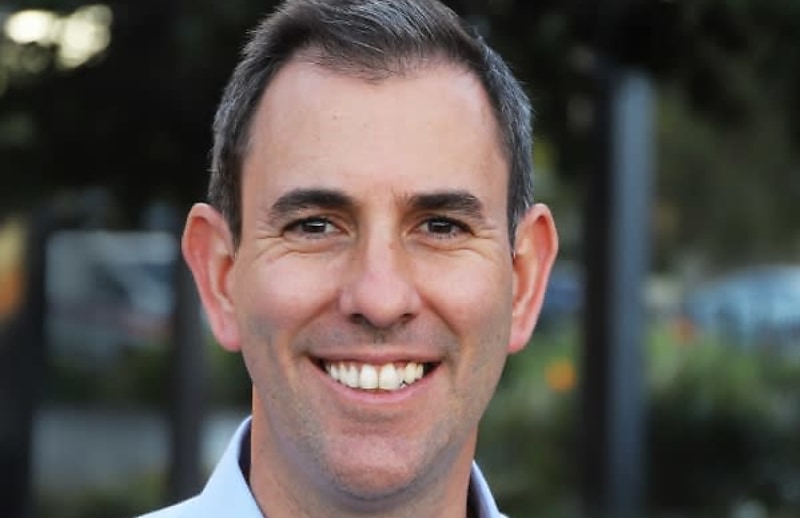Budget update benefits from $66bn in extra tax receipts
BusinessThe revisions include a modest deficit next year and almost $40 billion in improvements out to 2026-27, the Treasurer says.

More than $66 billion in forecast extra tax revenue since the May budget will improve the bottom line next year by almost $13 billion to return a deficit of just $1.1 billion and improve the result out to 2026-27.
The Mid‑Year Economic and Fiscal Outlook from Treasury today showed the cash balance out to 2026-27 will benefit by almost $40 billion because “92 per cent of tax upgrades have been returned to the budget” while real spending growth had been curtailed to an average of 0.8 per cent.
“After delivering the first surplus in 15 years, the mid‑year update shows that deficits and debt are now lower in every year of the forward estimates compared to the May Budget and are significantly lower compared to what we inherited,” Treasurer Jim Chalmers said.
Tax receipts had increased $16.4 billion this year alone and would be $66.1 billion higher over the next four years due to variations against forecasts of wages, company profits, GST receipts and other parameters.
The Treasurer said cost-of-living programs and the fight against inflation were being conducted against a backdrop of “getting the Budget in much better shape”.
The MYEFO also forecast improvements in gross debt as a share of GDP, which was now expected to peak lower at 35.4 per cent in 2027‑28 before declining to 32.1 per cent of GDP by the end of the medium term, saving billions in interest payments.
“We will avoid $145 billion over 12 years to 2033‑34 in interest costs on the debt we inherited as a result of banking the vast majority of upgrades to revenue,” Mr Chalmers said.
“Through our spending restraint and by returning the vast majority of revenue upgrades to the budget, our fiscal strategy is working alongside monetary policy to reduce inflationary pressures in the economy.”
Inflation was forecast to fall to 3.75 per cent for the year to June quarter 2024, dropping within the RBA’s target range of 2-3 per cent in 2025.
“The ABS has confirmed that our cost‑of‑living policies have already reduced inflation by 0.5 percentage points through the year to September, and Treasury estimates they will reduce inflation by 0.75 percentage points in the June quarter 2024.”
“Inflation is moderating but it is still too high. Global oil prices have driven a near‑term uptick in inflation but Treasury still expects inflation to return to the target band on the same timeframe as at budget time.”
Unemployment would peak at 4.5 per cent at the same time with wage growth also moderating to 3.25 per cent.
“While unemployment is expected to tick up slightly, it is at historic lows and has seen the longest consecutive run below 4 per cent since monthly records began,” he said.
“The participation rate is at record highs and more than 620,000 jobs have been created since we came to office – a record for a first term government and a faster rate than all major advanced economies.”
“Wage growth has picked up to its fastest annual rate since 2009, and after two consecutive quarters of positive real wage growth, annual real wage growth is expected to return in early 2024.”
Mr Chalmers said the economy was slowing as expected due to inflation, high interest rates, and global uncertainty weighing on domestic activity.
The economy was expected to expand by 1.75 per cent in 2023–24 before regaining momentum in 2024‑25 and growing 2.25 per cent, then improving slightly each year to 2026-27.
He said the government would go ahead with plans for $23 billion in targeted cost‑of‑living relief, including investing another $6.5 billion to boost housing supply and affordability, and more support for Australians to return to work.
It would also invest around $3 billion to turn Australia into a “renewable energy superpower” with money going to critical minerals projects and up to $12.6 billion for a landmark National Skills Agreement along with investments in migration reform and the Employment White Paper Roadmap.
Money would go towards healthcare along with “initiatives that build our economic resilience, sustain our environment, strengthen the digital economy and improve trade”.
“We are getting the budget in a much better position, helping to ease the pressure on Australians and lay the foundations for future growth despite the many global and domestic challenges coming at us,” he said.
“The mid‑year budget update shows the Albanese government has found a way to repair the budget at the same time as we roll out tens of billions of dollars in cost‑of‑living help and invest in skills, Medicare, energy and housing and other priorities.”



